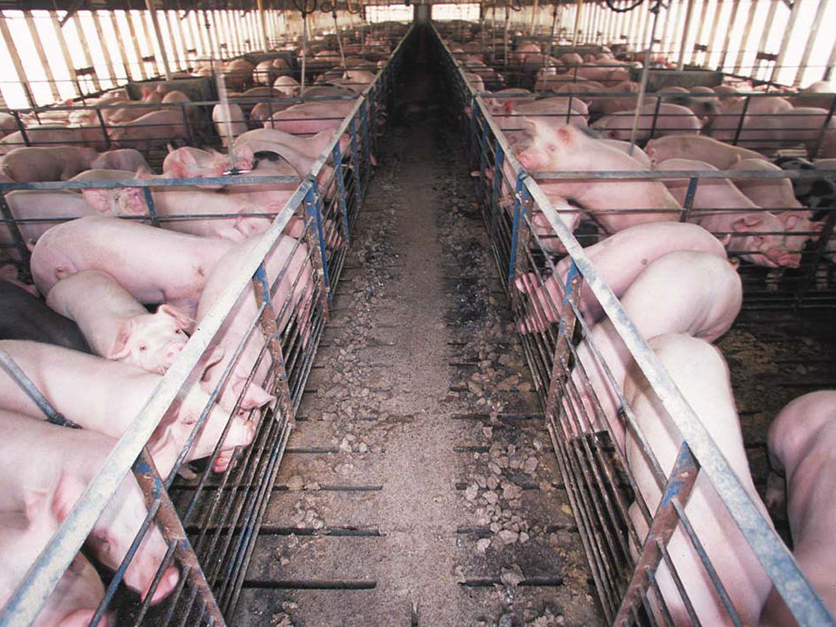The Agriculture Department is recruiting owners of cattle and hog operations to take part in surveys about their marketing strategies and the size and health of their herds, and officials say the results could be beneficial in future trade negotiations.
To assure producers of confidentiality, only the researchers will know the identity of participating farmers, and no names or contact information will be associated with the data.
Starting in May and running through July, USDA’s National Animal Health Monitoring System, working in conjunction with the National Agricultural Statistics Service, will be conducting surveys of small enterprise swine operations, farms with fewer than 1,000 pigs.
Researchers will collect information on the prevalence of pathogens such as E. coli as well as on management practices and alternative marketing strategies. Roughly 5,000 operations across 38 states will be asked to participate. In a second phase of the survey, for example, vets will be asking about specific diseases producers have encountered, along with vaccine and medication usage.
Charles Haley, a veterinary epidemiologist at USDA who is leading the swine study, said between 60% and 70% of operations in the country have fewer than 1,000 pigs and the number of those small farms seems to have increased slightly. He’s trying to figure out why.
“There’s been some shift into niche marketing — such as organic, pasture-raised, antibiotic-free — and we know nothing about those people. We don’t know anything about their education needs. We don’t know how they market at all,” Haley told Agri-Pulse.
He said having national estimates of the entire swine population are useful in trade negotiations, too.
“I’ve never been to a trade negotiation, but I think we’re the only country in the world that can actually produce national estimates as a snapshot for a trading partner on a variety of things,” Haley noted. He said those things include production, housing, and other husbandry practices.
Data on health and management practices faced by swine producers will be compared with similar data collected in 2007 and 2012, according to USDA.
In May, certain producers will receive a letter in the mail explaining the study and will be asked to participate by filling out a questionnaire. NASS statisticians will then follow up with the producer if they don't get a response.
A study focusing on large swine operations with more than 1,000 pigs will take place from July through January 2022, and also will focus on health and management practices.
Haley expects researchers to identify impacts related to the COVID-19 pandemic. The surveys were supposed to be conducted last year but were postponed because of the pandemic.
“We talked with the industry people and they said, ‘No you can’t visit these guys now, they’re going through hell with all the plant closures.’ I do expect to see something, and I think the industry expects to see something different, too,” he said.
As the industry works with trading partners, legislators, and regulators, Liz Wagstrom, chief veterinarian at National Pork Producers Council, said these types of reports are critical in negotiations.
“We have this (and) the agricultural census reports, but the NAHMS reports are one of the few that go into the depth of animal health and animal production, so they have great value,” Wagstrom told Agri-Pulse.
Wagstrom said throughout the almost 30-year history of the reports, there’s been a long partnership in helping with the development of the surveys and all producers are encouraged to participate.
Interested in more news on farm programs, trade and rural issues? Sign up for a four-week free trial to Agri-Pulse. You’ll receive our content - absolutely free - during the trial period
Meanwhile, a national two-phased study starting this month will examine cattle health and feedlot management with operations having at least 50 animals, and the National Cattlemen's Beef Association is asking members to participate.
“We anticipate 5,300 feedlot operations to be randomly selected for the first phase of the study,” said Chuck Fossler, another USDA veterinary epidemiologist.

Ethan Lane, NCBA
If participants choose to take part in the second phase, USDA or state veterinary health professionals will administer an additional questionnaire from June through August.
Fossler said the information collected will help to better understand disease preparedness strengths and vulnerabilities, help policymakers and industry stakeholders make informed decisions regarding feedlot cattle health and management, and identify research and development needs.
Ethan Lane, NCBA's vice president of government affairs, said the U.S. feedlots survey is relatively new compared to other studies NAHMS has done.
"It's a great opportunity to start to build that record of data and trends over time so we can get an idea where USDA can target its efforts over time and where the industry needs to be focused on, on various trends and feedlot management," Lane told Agri-Pulse.
Fossler also said they will be looking into how COVID-19 impacted the industry over the last year.
“There are several questions about whether COVID has affected management or cattle health in feedlots, such as the number of placements, average days on feed, and illnesses in late-fed cattle,” he noted.
Surveyors also will be asking questions about the use of antibiotics and other medications used to treat or control bovine respiratory disease and other illnesses. There are additional questions about the use of products that may have food safety implications, Fossler said.
Fossler said previous NAHMS feedlot studies have been conducted in 1994, 1999, 2011, and 2017. He also emphasized that producer information would be kept confidential.
For more news, go to www.Agri-Pulse.com.


